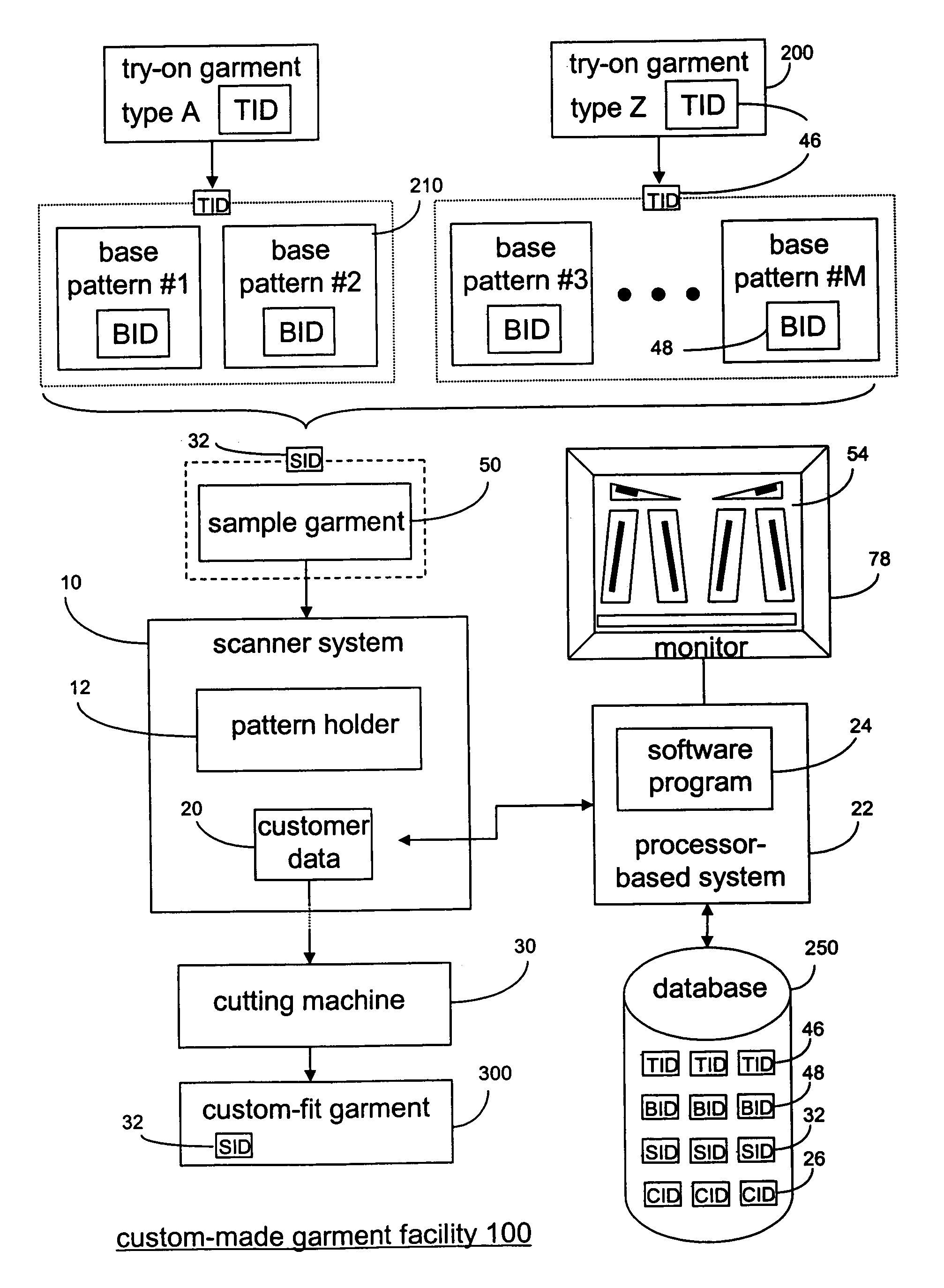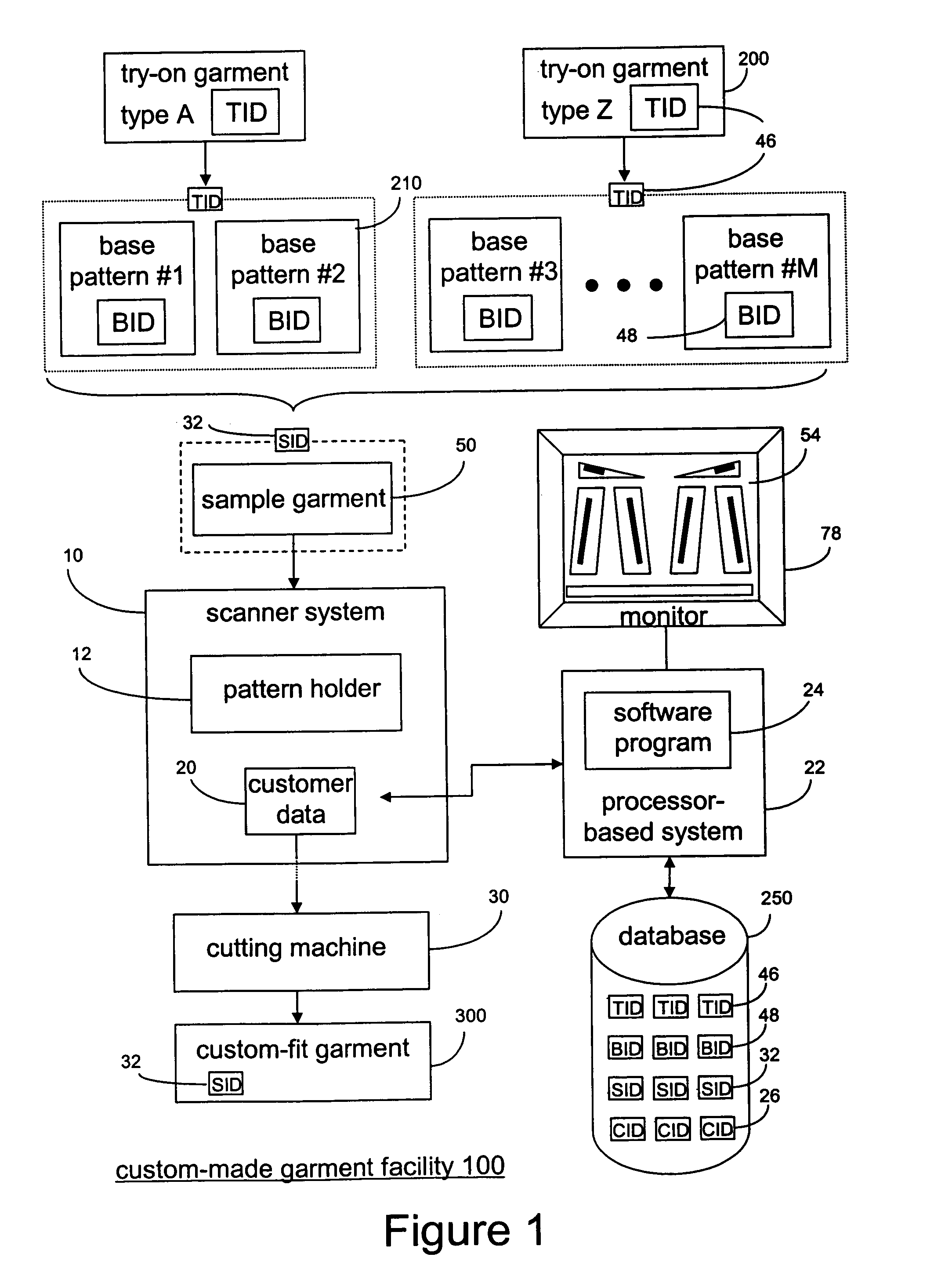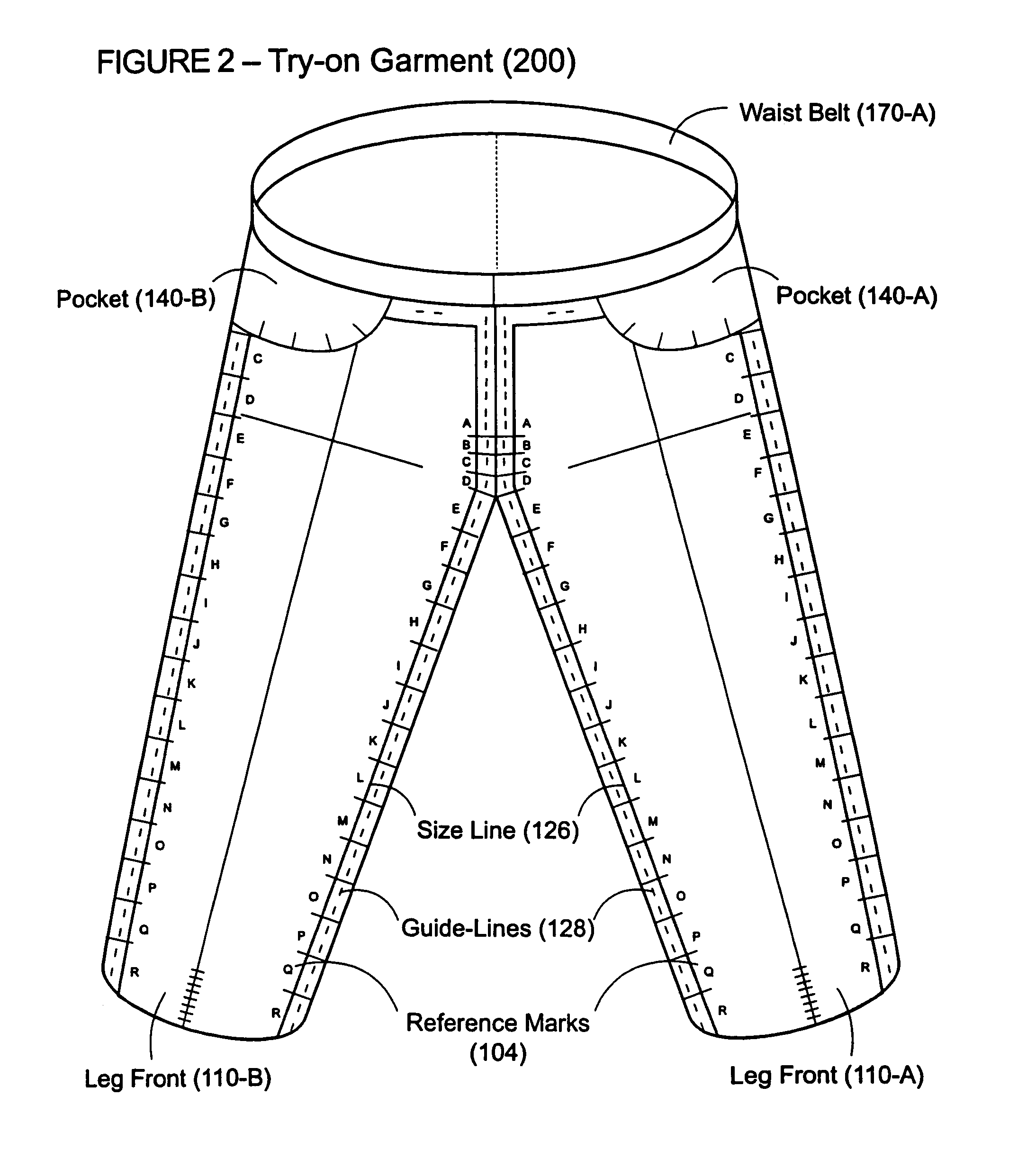System and method for custom-made clothing
a technology for custom-made clothing and clothing parts, applied in the field of clothing manufacturing, can solve the problems of affecting the satisfaction of customers, affecting the ability to satisfy all customers, and many customers not fitting into any available sizes,
- Summary
- Abstract
- Description
- Claims
- Application Information
AI Technical Summary
Problems solved by technology
Method used
Image
Examples
Embodiment Construction
[0032]Generally, in accordance with the embodiments described herein, a garment facility produces custom-made garments according to both the body contour, fit and style preferences of a customer. Sample garments, made by connecting one or more base patterns together, are made available to the customer for fitting.
[0033]Each sample garment is made from base patterns that have been marked and modified by tailors or other persons associated with the facility, according to the desired fit and the body contour of the customer. The marked sample garment is then scanned and information corresponding to the marks and desired modifications are sent to a cutting machine as digital data. Material for the custom-fit garment is then cut according to the digital design data and the cut items are sewn together to form the custom-made garment. Various sample garments created from different base patterns can be the basis for other custom-made garments.
[0034]In FIG. 1, one example of a custom-made ga...
PUM
 Login to View More
Login to View More Abstract
Description
Claims
Application Information
 Login to View More
Login to View More - R&D
- Intellectual Property
- Life Sciences
- Materials
- Tech Scout
- Unparalleled Data Quality
- Higher Quality Content
- 60% Fewer Hallucinations
Browse by: Latest US Patents, China's latest patents, Technical Efficacy Thesaurus, Application Domain, Technology Topic, Popular Technical Reports.
© 2025 PatSnap. All rights reserved.Legal|Privacy policy|Modern Slavery Act Transparency Statement|Sitemap|About US| Contact US: help@patsnap.com



